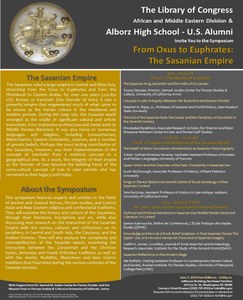From Oxus to Euphrates: The Sasanian Empire

Because I’m a historian of Sasanian visual culture, I was asked to speak about the Sasanian rock reliefs and their impact on later Persian art. Carving monumental images into live rock to glorify the rulership and military prowess of kings is a hallmark of Sasanian art and the culmination of an artistic tradition stretching back millennia in what is today Iran and northern Iraq. Although the Sasanian empire engendered much of what we know as Iranian or Persian culture of the medieval and modern period, rock relief carving was abandoned by successive Iranian Islamic dynasties. It was revived only in the late 18th century by the Qajar ruler, Fath ‘Ali Shah (r.1798-1834), who, along with two of his progeny carved a total of 7 reliefs. Except for an eighth relief commissioned by his great grandson, Nasir al-Din Shah (r.1848-1896), this monumental medium of royal power gave way in the second half of the 19th century to smaller-scale architectural decoration that lauded the imagery of an earlier Persian dynasty, the Achaemenid (c. 550 – 330 BCE). This change of imagery had to do in great part with Sir Henry C. Rawlinson’s reading of the Achaemenid Bisitun inscription which showed Persia to be an imperial power long before the Sasanians and sparked national pride as the Qajars struggled to remain independent of European and Russian economic and political influence. I had written about this in the catalogue for ISAW’s exhibition, “The Eye of the Shah,” held October 2015-January 2016.
The symposium was recorded for later online viewing via AMED’s webcast page, and the papers will be published by UCI, Jordan Center for Persian Studies in 2018.